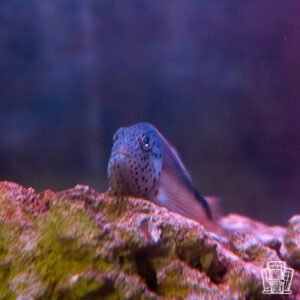Description
Scientific Name: Centropyge flavissima
Common Names: Lemonpeel Angelfish, Yellow Angelfish, Lemon Angelfish
Maximum Length: 5.5 inches (14 cm)
Minimum Aquarium Size: 55 gallons (208 liters)
Foods and Feeding Habits: Omnivorous; feeds on algae, small invertebrates, and sponges in the wild. In aquariums, provide algae-based flakes, spirulina-enriched pellets, frozen mysis shrimp, or chopped seafood. Feed 2-3 times daily in small amounts. Algae-covered live rock encourages natural grazing and supports dietary needs.
Reef Safety: Not reef-safe; frequently nips at stony and soft corals, as well as clam mantles and small invertebrates. Best suited for fish-only tanks or carefully monitored reef setups with robust corals.
Temperament: Semi-aggressive; territorial and may bully smaller or more passive fish, particularly other dwarf angelfish. Best housed with semi-aggressive tankmates of similar size. Keep singly, as multiple Lemonpeel Angelfish may fight unless in a very large tank.
Description: The Lemonpeel Angelfish is a radiant standout for hobbyists who crave bold color and a spirited presence in their aquariums. Its vivid lemon-yellow body, often accented by faint blue highlights around the eyes and fins, brings a burst of sunshine to any tank. Aquarists are drawn to its lively demeanor, as it darts among live rock or grazes on algae, asserting its territory with confidence. A 55-gallon tank with ample hiding spots and algae-rich surfaces suits its active nature, while a balanced diet of algae and meaty foods keeps its hue vibrant. Though its coral-nipping habits make it better for fish-only setups, its striking appearance and bold personality make it a favorite for experienced keepers who can handle its care demands.
Fun Facts
- The Lemonpeel Angelfish’s bright yellow color can intensify with a diet rich in algae and carotenoids.
- In the wild, it’s often found in small harems, with one dominant male overseeing several females.
- Its blue-ringed eyes give it a distinctive, almost playful look, endearing it to aquarists despite its feisty nature.





